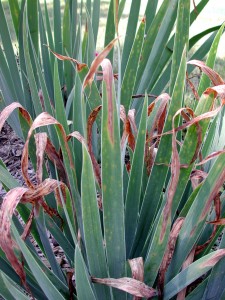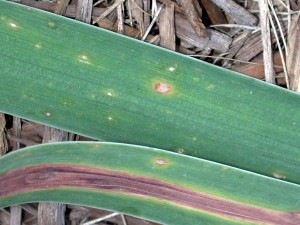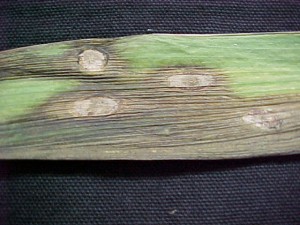Didymellina leaf spot
Pathogen: Didymellina poecilospora
Hosts: Iris, most severe on rhizomatous Iris
Symptoms: The first symptoms are tiny brown spots with water-soaked borders. As disease progresses the water-soaked areas develop into irregular spots with grayish centers and dark borders. Foliage is killed, weakening the rhizomes. Disease severity worsens after bloom.
Spread: Rain and splashing water disseminates spores to adjacent plants. The disease can easily be introduced on infected plant material.
Management: Good sanitation is important. Leaf debris should be removed in the fall to reduce inoculum which overwinters on the dead foliage. If infected debris is left in the area in the spring the pathogen can sporulate and reinfect developing foliage.



Other Documents in this Series
You Might Also Be Interested In
Accessibility Questions:
For questions about accessibility and/or if you need additional accommodations for a specific document, please send an email to ANR Communications & Marketing at anrcommunications@anr.msu.edu.



 Print
Print Email
Email




